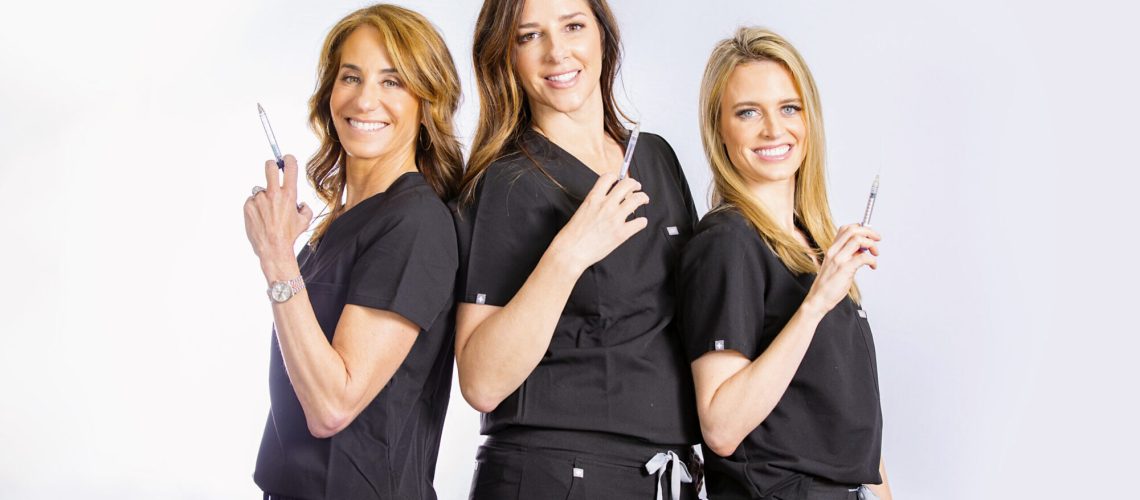Dermal fillers are a type of cosmetic injectable used to restore volume, smooth out wrinkles and folds, and enhance facial contours. They are typically made of hyaluronic acid, a naturally occurring substance in the body that helps keep skin plump and hydrated.
When injected into the skin, dermal fillers can smooth Wrinkles
Smooth out wrinkles and fine lines: By filling in the gaps beneath the skin, dermal fillers can reduce the appearance of wrinkles and fine lines, giving the skin a more youthful and smooth appearance.
Dermal Fillers Restore Volume
As we age, we tend to lose fat and collagen, which can cause the face to appear sunken or hollow. Dermal fillers can be used to restore volume to the cheeks, temples, and other areas of the face, giving a more youthful and lifted appearance.
Dermal Fillers Enhance facial Contours
By adding volume to specific areas of the face, dermal fillers can help to enhance facial contours and create a more defined and sculpted look.
Overall, dermal fillers can be an effective non-surgical option for those looking to rejuvenate their appearance and achieve a more youthful, refreshed look.
If I don’t like my results, can dermal filler be removed?
Yes, dermal fillers can be removed, but the process can vary depending on the type of filler used and how long it has been in place.
Temporary fillers, such as hyaluronic acid-based fillers, can be dissolved using an enzyme called hyaluronidase. This enzyme breaks down the hyaluronic acid molecules in the filler, allowing the body to naturally absorb and eliminate them. The results of the treatment will start to fade over the next few days.
However, it’s important to note that the use of hyaluronidase can cause some swelling and bruising, so you should discuss this option with your injector and follow their instructions carefully.
On the other hand, semi-permanent or permanent fillers are more difficult to remove. In some cases, surgical removal may be necessary. In these situations, you should seek the advice of a qualified and experienced plastic surgeon or dermatologist who can evaluate your individual case and provide you with the best treatment options.
What are some examples the most popular dermal fillers used in medspas currently?
Juvederm: Juvederm is a hyaluronic acid-based filler that is FDA-approved for treating moderate to severe facial wrinkles and folds. It is also used to add volume to the lips and cheeks. Juvederm results can last up to one year.
Restylane: Like Juvederm, Restylane is a hyaluronic acid-based filler that is used to treat moderate to severe facial wrinkles and folds. It is also used to add volume to the lips and cheeks. Restylane results can last up to 18 months.
Sculptra: Sculptra is a poly-L-lactic acid-based filler that is used to stimulate collagen production in the skin. It is used to treat wrinkles, folds, and hollow areas of the face. Sculptra can last up to two years or more, and is known for its very natural looking results.
Is every dermal filler the same?
Different dermal filler products may have different formulations of HA, as well as different cross-linking technologies, which can affect the product’s viscosity and elasticity. These factors can influence the consistency of the filler, which in turn can affect how it feels and behaves when injected, as well as how long it lasts in the skin.
In general, fillers with a higher degree of cross-linking tend to be thicker and more cohesive, while fillers with a lower degree of cross-linking tend to be thinner and more fluid. The consistency of the filler can also be adjusted by the injection technique used by the practitioner.
It’s important to work with a skilled and experienced injector who can help you choose the right dermal filler product for your needs and use it in a way that achieves the best results.
Who should I trust to inject filler into my face?
When it comes to getting fillers injected into your face, it’s important to choose a qualified and experienced injector to ensure the best results and reduce the risk of complications.
Here are some tips on who to trust for your filler injections:
Look for a licensed and board-certified medical professional. This can include a dermatologist, plastic surgeon, or a specially trained nurse practitioner or physician assistant.
Check their credentials and experience. Look for a provider who has specific training and experience in injectables and has performed many successful procedures. You can research their credentials online or ask for recommendations from trusted friends or family members.
Consider their communication and listening skills. A good injector will take the time to understand your goals and concerns, and work with you to develop a customized treatment plan that meets your needs.
Evaluate the safety and cleanliness of their facility. Make sure that the clinic or office where you will receive your treatment follows proper hygiene and safety protocols and uses sterile equipment and supplies.
Look for before-and-after photos of their previous patients. This can give you an idea of the injector’s skill and the results they have achieved with other patients.
By taking the time to research and choose a qualified and experienced injector, you can have confidence in your decision and enjoy the benefits of a successful and safe filler treatment.
